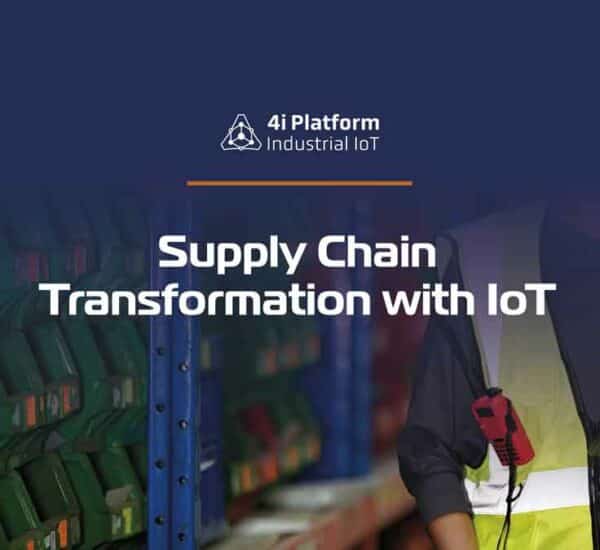The IIOT represents the fourth industrial revolution. “To link or not to connect…?” ; sooner or later, you also might have to think about this.
The IIOT will literally link every company in the production chain to each other.
Technology will no longer be simply a tool but the heart of the business that determines its competitive strength.
The production procedures themselves will be of secondary importance. The importance of data exchange via the cloud and of software that controls the production chain will get far greater.
Companies must transform themselves into ICT companies. Companies that adhere to their traditional businesses for too long will miss the boat.
What is the IOT?
IoT stands for Internet of Things. It refers to the connection of physical devices to the net.
More specifically, to software in the cloud. Devices generate data with the support of sensors and other measuring tools. These make it feasible to track, control, test and analyze a physical device via a digital application.
The IOT makes it possible for machines, products, devices and systems to communicate digitally with each other and with individuals. It can optimize processes this way and make life easier for workers and managers.
The IIOT — A Step Further Then Daily Life Uses
Companies such as Uber and Airbnb have turned the travel market on its head using the IOT and cloud-based computing. The big traditional companies continue to hold onto old business models and attempt to work against the newcomers.
These new business models will eventually gain the upper hand. It is pointless for traditional companies to resist these newcomers.
The consumer market and IOT applications are a driving force behind the Industrial Internet of Things. The IIOT maintains the connection between industrial equipment, machines and applications in the cloud.
It gives physical apparatus and process systems throughout the whole production and distribution chain an opportunity to properly communicate with each other.
What do you want for the IIOT?
There is no’one size fits all’ solution to connect devices to the internet and to applications. Almost every IIOT application requires a customized approach.
However, three common elements can be identified.
Step 1. The IIOT device
In principle, you can use any apparatus as a smart IIOT instrument. It could be a sensor or a network of sensors, an entire machine or even an industrial terrain.
Once linked to the cloud, a device can not only be controlled but can also supply valuable information for other applications. In many IOT cases, it concerns a sensor that generates data or several sensors on an IOT apparatus, which send data to the cloud via a transmission module.
Step 2. Ensuring IIOT connectivity
A device or sensor can only be an IIOT resource if it is on the cloud but you are not limited to a particular connection technology. You can use wireless connections, such as WiFi, bluetooth, GSM, 3G, 4G or 5G, or UTP or glass-fibre cable connections.
The telecommunications sector has developed low power wide area (LPWA) technologies specifically for IOT applications.
Most IOT sensors do not require a high-bandwidth or high-speed connection. Very low energy consumption and limited bandwidth provide the necessary connectivity at low price.
Step 3. Processing and using platform IOT data
A device or sensor only becomes an IOT resource if you use the connection and data for a higher purpose. The software and data in a cloud platform make the devices smart.
An IOT platform allows you to: gather, store, display and analyze data and then produce management reports, control external procedures, etc..
Smart industries and smart manufacturing with the IIOT
Within ten years, the business world will be transformed into smart businesses with smart businesses and smart factories. Not merely because it can, but because it has to. Business success revolves around responding to demand at the lowest possible price.”
If you resist the transformation into the IIOT, you will not just price yourself out of the market but you will also miss good opportunities.
The IIOT — benefits and opportunities
The IIOT makes it possible to :
- Monitor
- Evaluation
- Analyse
- Control
- And identify trends
The IIOT is changing business
Traditional business models focus on a company’s core business and its expansion. In addition, they are limited by a tendency to protect data and information. The distinction between your own company and its suppliers, distributors and transporters is still significant.
The aviation industry is a good example of an industry that is transforming. Boeing used to develop everything itself but the growth of an airliner today is similar to a joint venture.
Specialized companies develop and produce components in partnership.
How do you become an IIOT company? Three tips
There is no easy answer to this question. The application of the IIOT requires a customised approach to the combination of IIOT devices, connectivity and the platform.
Here are three tips for getting on board the fourth industrial revolution.
Work together and be open
Measuring is knowing. Information is the company’s most important asset. The further you collaborate, the more data and information you can collect.
Draw up a detailed map of the entire production chain
Every device, sensor and system can generate information in the cloud and/or can be controlled via the cloud. Identify all of the devices, sensors and systems in the whole production chain; from those of manufacturers and providers to those of the distributor and customer. Take information gathered through the use of a product into consideration as well.





